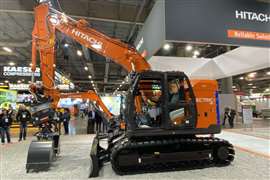Understanding your people and your needs
13 December 2017

Odds are, you don’t have a complete understanding of your workforce’s skills, where the gaps are – or both. While yes, we are living and working in times where access to metrics, analytics and each other is at an all-time high, we still can’t know everything about every facet of our organisation, including our people.
We have plenty of systems in place, but not necessarily a system to track the skills our people have or have gained – to analyse that information and use it to measure when and where those skills can be put to use most productively, both now and in the future.
Preparing for the future
That said, the future of specialized transport and construction is only getting more hi-tech and data driven. If we don’t know as much as we can about the people we have working for us, how will we know if we’re prepared for future industry advancements? Or worse, how will we retain these people if and-or when they decide to jump ship for an organisation that does understand their skills, and thus, their value?
Tech disruption being what it is, it is impossible to predict exactly the skills businesses will need in both the short- and long-term future. What we do know is that adaptability and familiarity with personnel at least prepares us for whatever new disruptions come along in our industry.
Jeff Hesse is the co-leader of Workforce of the Future at PwC, the second-largest professional services firm in the world. He recently wrote that, even now, with automation still in its early days, CEOs say that finding the skills they need has become the biggest challenge to their business – a situation that will only become more acute as technology evolves and competition for talent tightens.
Hesse underscored that, given the dynamics, it is vital for companies to have a system in place that can track and analyse the skills their people already have – and those they may need soon. First and foremost, Hesse noted, was the importance of making an inventory of your people’s skills. Next, he stressed the need to organise that inventory – to make it highly searchable in case you need to access it quickly. Third, Hesse emphasised that, with the data in place, you can begin to analyse it – with the goal being to gain insight into where your employees’ skills are the strongest, where they’re thin and where the gaps are.
Last, once you’ve built an inventory, he added, it’s time to look ahead: try to gauge the skills your company will need two to three years down the road. Don’t get caught by surprise having to hire (or replace) someone to fill a pivotal role at the last minute.
In addition, and perhaps as important as knowing your people, is knowing what type of people you need. Part of that challenge, at present, rubs up against the worker shortage.
Industry appeal
Try as we might to get the information out there, the task can seem daunting. But more young people are looking for a way to enter the job market without taking loans via higher education. Perhaps explaining it to them in no uncertain terms is the way to go.
According to the (U.S.) Bureau of Labor Statistics, a typical salary for a carpenter can range from US$40,000 to $80,000 per year. Construction equipment operators range from an average of $45,000 up to $80,000 a year. Construction managers typically make between $90,000 and $160,000 a year. Electricians land somewhere between $50,000 and $90,000. Ironworkers average around $50,000 and can make up to $90,000. And depending on the type of driver, truckers can earn anywhere between $40,000 and more than $100,000 per year.






